Your core is the focal point of everything that you do. Standing, sitting, walking, running, jumping. For every daily activity that you engage in, your core plays an important role. Surprisingly to some, even while reading this article you will use your core muscles.
What Does Core Strength Mean
Most people think of crazy six pack abs when they talk about the core. While this may be the most popular way to describe the “sexy” muscles, they are missing out on a large part of what makes up the core. Your core, is the group of muscles that helps get you through many of your daily activities. These muscles include your rectus abdominis (stomach), transverse abdominis, trapezius (shoulders), latissimus dorsi (back), obliques (external and internal), serratus anterior, diaphragm (breathing), pelvic floor, glutes, quads, hamstrings and your erector spinae (back). By training all of these muscles, which influence the foundation of your upper and lower body, all of the movement, balance, power and strength that is needed from the time you get out of bed until the time you get back will be that much easier.
Why Should I Train My Core and The Benefits:

There are superficial benefits of having a six pack, just ask fans of Ryan Reynolds, Chris Hemsworth, Jennifer Lopez or Jenna Dewan. Some of us may get there, some of us won’t. However just because your washboard isn’t popping, it doesn’t mean that you don’t have a strong core. You also don’t have to be a Hollywood heartthrob or a professional athlete or a model, core training is for everyone. If you work a desk job eight hours a day or are on your feet for your entire work shift, having a well-conditioned core is important for your posture. If you do manual labor, having a strong core is key to getting through your day and bouncing back for the next day without pain.
Consider one important fact, your core is involved in basically every plane of movement, sagittal, frontal and transverse. When you focus on training your core, you are basically training your body for everyday movements. From walking down the street, getting through your workday, bending over the pick up your kids, playing sports, dancing, making sure you train your core will not only make your daily activities easier, but it will also help prevent injury and improve movement.
The Top 15 Bodyweight Core Exercises
While old school mindset may have you breaking out countless sit-ups, here are fifteen of the best bodyweight core exercises that you can add to your daily workout. For those exercises that require calisthenics equipment, check out our great selection of workout accessories.
Pull-Ups

Pull-ups are one of the toughest exercises for many people to execute properly, especially since some get it confused with a chin-up. However, when done with correct form, the pull-up works your back, arms and shoulders. Even before worrying about pulling your body up towards the bar, a “frozen pull-up” is a great place to start. By using a box or a chair to assist you, grip the pull-up bar with your palms facing away from you and your chin above the bar level. Aim to keep your body frozen by just hanging at that level for as long as possible (without your feet touching the box), keeping your core engaged, with your shoulders relaxed. When you feel your body start to drop, ease yourself down and repeat. For those ready for a regular pull-up, start by hanging with straight arms and legs off of the ground, pull yourself up until your chin passes the bar, slowly lower yourself until your arms are straight and repeat.
Check out all our pull-up bars!
Planks

Plank exercises are one of the simplest body weight exercises to execute, but yet can be one of the most challenging depending on the duration and the style that you are doing. With the goal of a plank being to maintain an isometric position for a period of time, your core muscles will be firing throughout the entire exercise. While there are many variations to plank exercises, the basic plank targets muscles in the back, shoulders, abdominal area and either your wrists or forearms depending on the variation you are doing.
To perform the basic plank, set yourself in pushup position with your wrists aligned with your shoulders, if you are doing a forearm plank, lie down propped up on your forearms with your elbows under your shoulders and your arms in a “L” shape. The distance between your feet will also change the challenge of holding the plank (feet together is harder than feet shoulder width apart). Imagine running a pole straight down from your head through your back, keeping your hips from sagging and your abdominal section engaged. Most people target plank exercises for between 30 seconds to over a minute and do multiple reps to complete a set.
Hanging Knee Raises

As with all of the exercises on this list, hanging knee raises target the abdominal muscle group, but also impact the hip flexors and the obliques. Hanging from a pull-up bar or a Roman Chair, which helps support your forearms and back, bring your legs from full extension into a knee tuck at 90 degrees. It is key to make sure that your legs don’t swing out of control and that your upper body stays as still as possible in order to properly execute this exercise. By changing the tempo and the rotational movement of the knee raises increases the challenge of the exercise and the muscle groups that are targeted. The hanging knee raise is a progression to other core focused exercises seen later on this list.
Crunches

There is a good chance that at some point a caveman was doing crunches trying to improve his six pack and attract the opposite sex, that’s how long they have been around. Not to be confused with sit-ups, crunches primarily direct their attention towards the abdominal section. One of the easiest exercises that are often done incorrectly, when performed wrong, crunches can actually do serious injury. Herky, jerky movements and pulling your head up with your hands can lead to discomfort in your neck and lower back.
Crunches are most effective when they are done slow and in control. A rule of thumb when doing crunches is to lay flat, keep your feet on the floor and bend your knees. Place your palms on your legs and as you sit up, slide your palms until they reach your kneecaps. As you raise up, keep your abdominal section engaged. Remember the work isn’t done here, keep the same tempo and form and muscles active when you decline in order to get full results.
Superman

Targeting your abdominal section, glutes and your lower back, Superman’s are a relatively easy isometric exercise that can be used during a warmup or cool down. Lay face down with your arms and legs fully extended. In the basic form of the Superman exercise, you will keep your arms and legs completely straight while elevating them off the floor at the same time and holding them in the air for a period of time (approx. 30 seconds). Keeping your neck in line with your spine, do not lift your head or crane your neck. There are variations to the Superman core exercise that can have the same side leg and arm tucked in with the opposite side extended. Another option is to create a wave like motion with your body, elevating up and down.
Hanging Bicycle With Bar
Targeting your lower abdominals, the hanging bicycle uses your entire body while taking pressure off of your lower back. Gripping the pull-up bar with parallel palms (for beginners, using ab straps may be helpful), extend your arms and tuck your knees to waist height (or as high as you can elevate them). While you keep your abs engaged, start to slowly pedal your legs as if you were riding a bike. The key to this exercise is to maintain a stable and balanced body, not swinging from side to side. Remember that a controlled pace will have more impact than peddling like crazy. Aim for 30 rotations (15 per leg) or 30 seconds per set.
L-Sits (with parallettes)

L-Sits may be one of the hardest core workouts on this list. One key way to make it slightly easier is with the assistance of parallettes, as you will have some elevation off of the ground. Using a neutral grip, keeping your shoulders back and down, make sure that your wrist, elbow and shoulders are aligned. Depending on your strength and skill level, there are multiple progressions to eventually performing a full L-Sit. For beginners, you can start by just elevating your upper body off of the ground, while keeping your feet on the ground and having your knees in a tucked position.
Progression then leads to pulling a single foot off the ground (switch feet), then both feet, all while in a tucked position. After comfortably accomplishing this, advance to single leg elevation with a straight leg (switch legs). Once you are successful with the single leg L-Sit with proper form, elevate both legs in a 90 degree position and hold for anywhere between 3-5 seconds and then increase time, the use of rings or without the parallettes.
L-Hang to Inverted Hang (with gym rings)

Once you have mastered the use of rings for a L-Sit a progression is to add in an Inverted Hang. Please keep all safety factors in mind (having a spotter) when performing the inverted hang and be comfortable hanging upside-down. The key to combining the L-Hang to Inverted Hang is to make sure your body is completely stabilized. Pairing the two exercises together requires a lot of shoulder strength and mobility. Starting in your L-Hang, slowly start to pike your legs upward and lower your upper body into a full inverted hang. Release your legs back down in a slow and controlled tempo to the L-Sit position. Repeat as many times as safely possible.
Check out our gymnastic rings!
Side Plank

As with the regular plank, there are many variations to the side plank that will help strengthen your core, specifically your obliques, hips, shoulders and chest. For beginners, you can start with your knees on the ground. The basic side plank will have you rest on your forearm, with your elbow straight under your shoulder. You can advance this plank by elevating to using your hand, keeping it in line with your elbow and shoulder. Position your legs straight out, keeping a straight line running from your head, back, hips and feet.
For an more advanced plank, challenging your balance you can stack your feet, for beginners, place your feet slightly in front of one another. Keep your abs, glutes and quads active, making sure that your lower hip does not dip towards the ground. You can place your top hand on your hip or elevate it straight up in the air for more of a challenge. Hold each side plank for 30 seconds, completing 3-5 reps each side. Variations and progression include top leg lift (star plank), knee to elbow crunch and side plank dive throughs.
Russian Twists

With a focus on your obliques, abdominals, upper back and spinal erectors, the Russian Twist assists with increasing rotational movement and control of the core. This exercise can be done with the assistance of various resistance equipment such as a medicine ball or a weighted plate or simply with just your hands. As with all core exercises controlled tempo is key to performing the Russian Twist properly and effectively. Sitting back with your torso at a 45 degree angle and your knees bent with your feet elevated, slowly rotate your shoulders and tap the medicine ball/plate/hands on the floor on either side of your body. Make sure that your lower body stays grounded and does not rotate, only your upper body should move.
Front Raise With Resistance Band
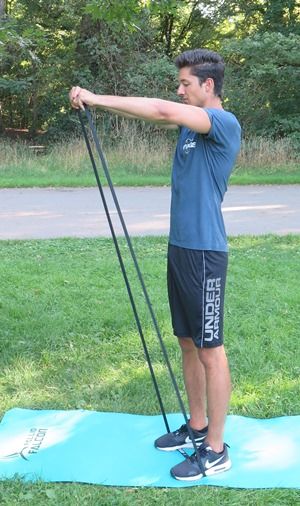
Remember that not all core exercises have to directly work your abdominal section in order to help strengthen and benefit your core. With the use of a resistance band (various tension) you can work out your shoulders, back (trapezius), chest (pectorals) and abdominals all in one exercise. Step on the resistance band with your feet approximately shoulder width apart. Grab the other end of the band with both hands, palms facing down and arms shoulder width apart with the band at waist height. With your abdominals engaged and your back straight, raise the band from waist height to shoulder height. Return the band back to waist level, but do not let the band snap back, slowly lower it the same tempo it was raised. Aim for 12-20 reps depending on the tension you are using and 3 sets.
Check out our Resistance Bands!
Glute Bridge

Sometimes referred to as a Hip Bridge, this exercise primarily focuses on your glutes and hamstrings, the glute bridge is a progression towards the weighted hip thrust. Variations can easily be made with by doing single leg only, marching bridges or adding weight. With your back and shoulders flat on the ground, bend your knees and keep your feet flat on the floor. Pushing through your heels, lift your hips while keeping your upper back, shoulders and head on the floor. This is a slow movement exercise, counting for 2-4 seconds on the way up, pause for 2-4 seconds and then lower for the same count. Keep your glutes active throughout the entire exercise.
Single-Leg Abdominal Press
This exercise is a basic variation of a “Dead Bug” and is a favorite for those who may be working through back pain issues. While lying on the floor with your knees bent, activate your abdominal muscles and slowly lift one leg off the floor. Bring that knee up towards a 90 degree angle and use the same side hand to push into the knee while the knee pushes into the hand at the same time for a three count. Return the leg to the starting position and repeat with the other side. While it may not seem like much, the contrasting force will target your abdominal section while keeping your back flat on the ground.
Toe Taps
The toe taps exercise targets the abdominal section and the obliques. As with the single leg abdominal press this exercise is executed while lying flat on your back, eliminating pressure on your lumbar spine. Depending on your workout, toe taps can be a great lead in exercise to something more intense or as a cool down from a more challenging exercise. With your back flat on the ground and both knees in the air, bent at 90 degrees, engage your abdominals and slowly lower one foot to tap the floor. Return that foot to the starting position and repeat with the opposite foot. If you want to increase this exercise to a more challenging level, tap both feet simultaneously.
All of the above exercises have modifications and progressions towards more complexed workouts. It is recommended that you check with a physician before engaging in any form of strenuous exercise and a certified trainer about your form first.
Are you looking for the perfect Calisthenics equipment to start out and to train your core with your bodyweight? We at Pullup & Dip offer you various high-quality Calisthenics equipment. Go check it out now!
Do you want to do more pull-ups?
Recommended articles:
7 tips for building muscle with bodyweight training
9 Fitness Mistakes Everyone Makes When They Start To Work Out
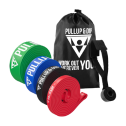
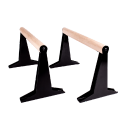
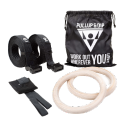



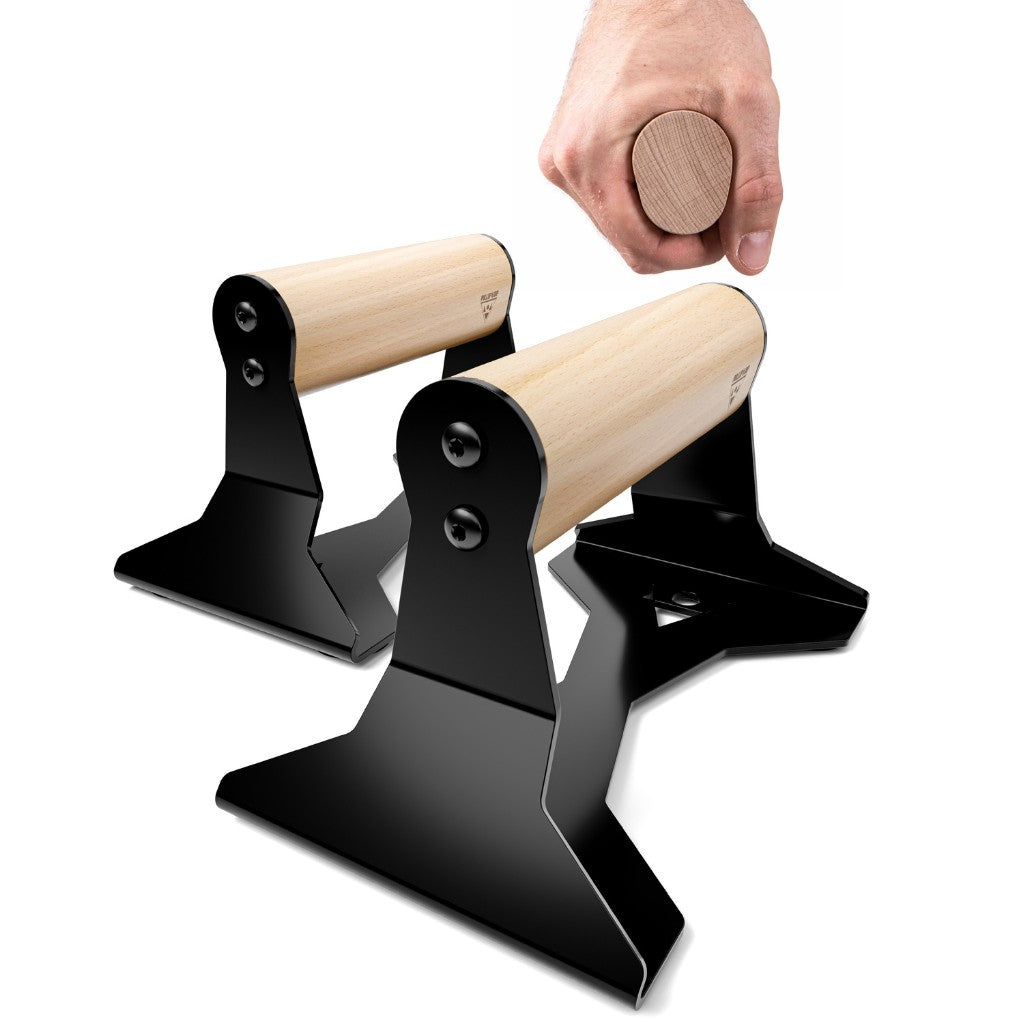
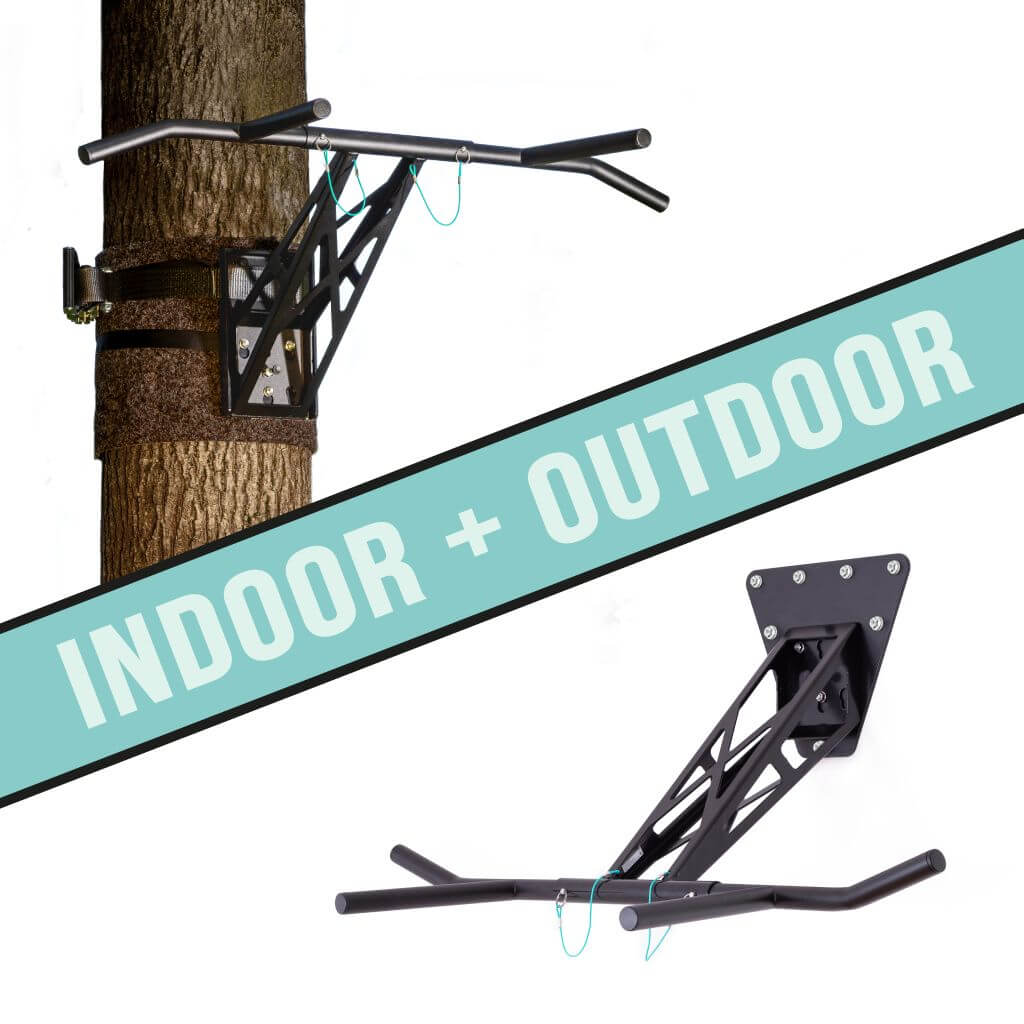
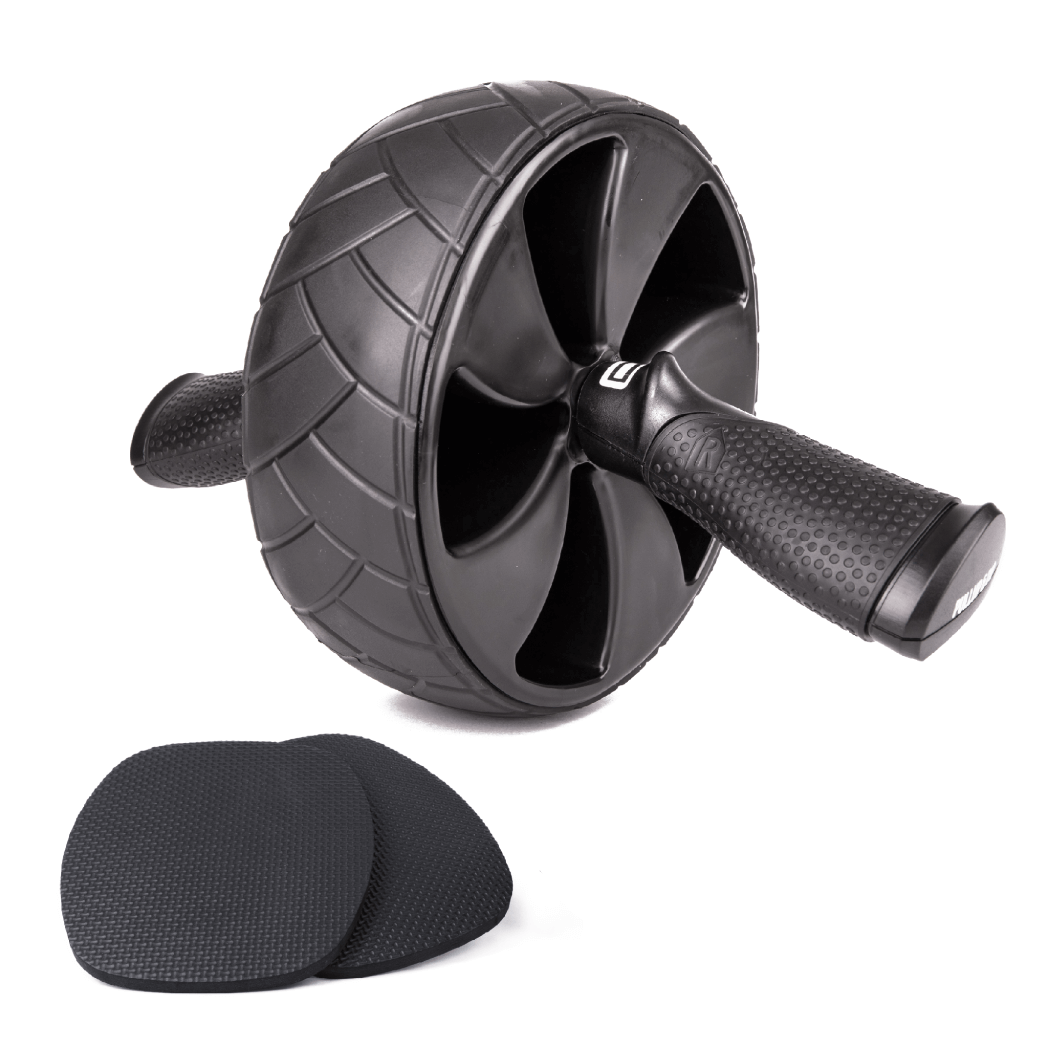
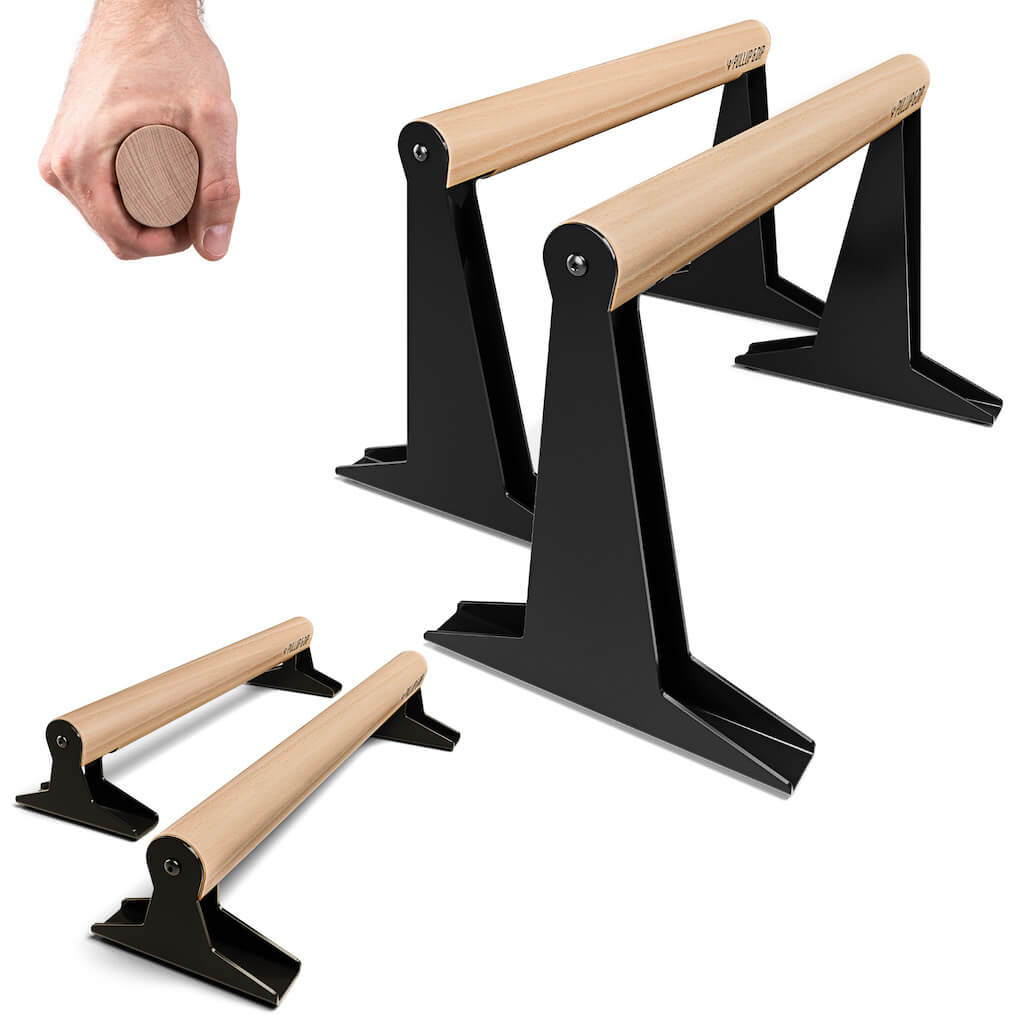
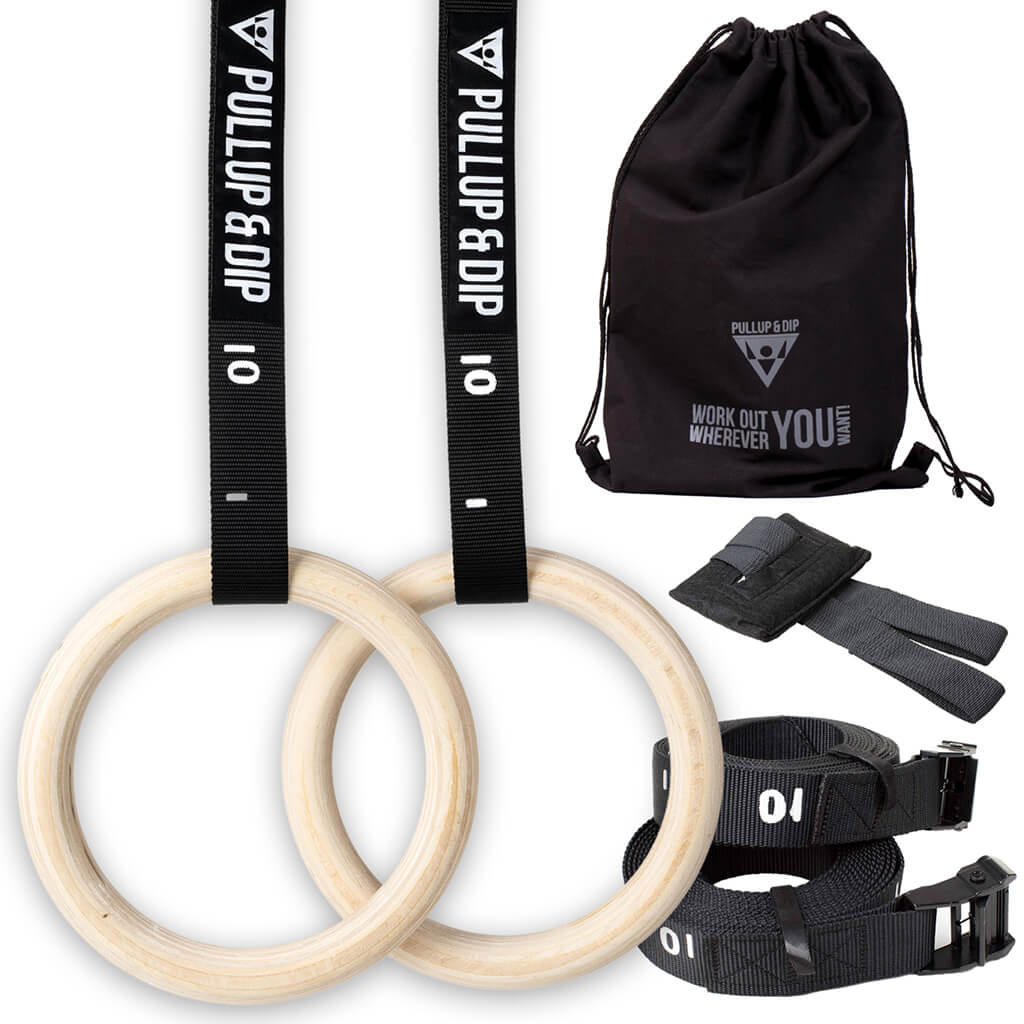
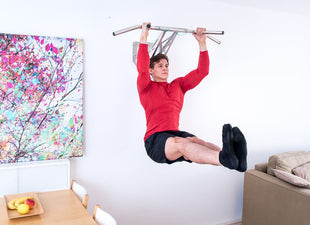
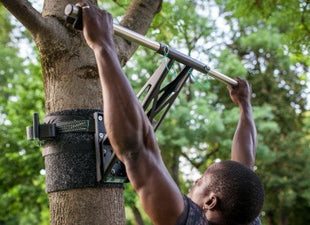
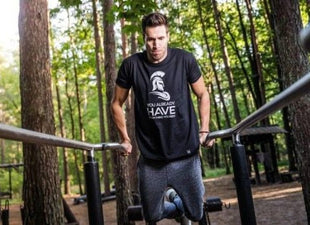
Leave a comment
All comments are moderated before being published.
This site is protected by hCaptcha and the hCaptcha Privacy Policy and Terms of Service apply.